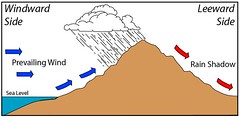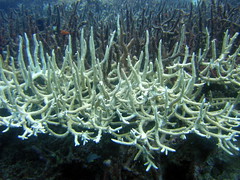| 9679601661 | climate | the average weather that occurs in a given region over a long period of time |  | 0 |
| 9679601702 | weather | the short term conditions of the atmosphere in a local area, which include temperature, humidity, clouds, precipitation, and wind speed |  | 1 |
| 9679601662 | troposhpere | the layer of the atmosphere closest to Earth's surface, extending approximately 16 km (10 mi) |  | 2 |
| 9679601663 | stratosphere | layer of the atmosphere above the troposphere, extending roughly 16 to 50 km (10-30 miles) above the surface of the Earth |  | 3 |
| 9679601664 | albedo | the percentage of incoming sunlight that is reflected from a surface |  | 4 |
| 9679601665 | saturation point | the maximum amount of water vapor that can be in the air at a given temperature |  | 5 |
| 9679601666 | adiabatic cooling | the process in which the decrease of atmospheric pressure allows rising air to expand in volume and lower it's temperature |  | 6 |
| 9679601667 | adiabatic heating | the process in which the increase of atmospheric pressure allows sinking air to decrease in volume and raise it's temperature |  | 7 |
| 9679601703 | latent heat release | the release of energy when water vapor in the atmosphere condenses into liquid water |  | 8 |
| 9679601704 | atmospheric convection current | global patterns of air movement that are initiated by the unequal heating of the Earth |  | 9 |
| 9679601668 | Hadley Cell | the convection currents that cycle between the equator and 30 degrees N and S |  | 10 |
| 9679601669 | intertropical convergence zone (ITCZ) | the latitude that receives the most intense sunlight, which causes the ascending branches of the two Hadley cells to converge |  | 11 |
| 9679601670 | polar cells | a convection current in the atmosphere, formed by air that rises at 60 degrees N and S and sinks at the poles, 90 N and S | 12 | |
| 9679601705 | ferrell cell | convection current in the atmosphere that lies between Hadley cells and polar cells |  | 13 |
| 9679601671 | Coriolis Effect | the deflection of an objects path due to Earth's rotation |  | 14 |
| 9679601672 | gyres | large-scale patterns of water circulation that moves clockwise in the N Hemisphere and counterclockwise in the S Hemisphere |  | 15 |
| 9679601673 | upwelling | upward movement of ocean water toward the surface as a result of diverging currents |  | 16 |
| 9679601674 | thermohaline circulation | An oceanic circulation pattern that drives the mixing of surface water and deep water |  | 17 |
| 9679601675 | el Nino; ENSO | a reversal of wind and water currents in the South Pacific |  | 18 |
| 9679601676 | rain shadow | a region with dry conditions found on the leeward side of a mountain range as a result of humid winds from the ocean causing precipitation on the windward side |  | 19 |
| 9679601677 | terrestrial biomes | geographic regions that have a particular combination of average annual temperature and annual precipitation and contain distinctive plant growth forms that are adapted to that climate |  | 20 |
| 9679601706 | aquatic biome | an aquatic region characterized by a particular combination of salinity, depth, an water flow |  | 21 |
| 9679601678 | tundra | a biome that is cold and treeless, with low-growing vegetation |  | 22 |
| 9679601679 | permafrost | an impermeable, permanently frozen layer that prevents water from draining and roots from penetrating |  | 23 |
| 9679601680 | boreal forest | a biome; are forests made up primarily of coniferous (cone-bearing) evergreen trees that can tolerate cold winters and short growing seasons |  | 24 |
| 9679601681 | temperate rainforest | a biome; moderate temperatures and high precipitation typify this biome |  | 25 |
| 9679601682 | temperate seasonal forest | a biome; warm summers and cold winters with over 1 m (39 inches) of precipitation annually |  | 26 |
| 9679601683 | shrubland; Chaparral | a biome; is characterized by hot, dry summers and mild, rainy winters |  | 27 |
| 9679601684 | Temperate Grassland/cold desert | a biome; cold, harsh winters and hot, dry summers characterize this biome |  | 28 |
| 9679601685 | Tropical Rainforest | a biome; are warm and wet, with little seasonal temperature variation |  | 29 |
| 9679601686 | Tropical Seasonal Forests; Savannahs | a biome; are marked by warm temperatures and distinct wet and dry seasons |  | 30 |
| 9679601687 | Subtropical Desets | a biome; also known as hot deserts; hot temperatures, extremely dry conditions, and sparse vegetation prevail | 31 | |
| 9679601688 | Littoral Zone | is the shallow area of soil and water near the shore where algae and emergent plants such as cattails grow |  | 32 |
| 9679601689 | Limnetic Zone | a zone of open water in lakes in ponds |  | 33 |
| 9679601690 | Phytoplankton | floating algae |  | 34 |
| 9679601691 | Profundal Zone | region of water where sunlight does not reach, below the limnetic zone in very deep lakes |  | 35 |
| 9679601692 | Benthic Zone | the muddy bottom of a lake, pond, or ocean |  | 36 |
| 9679601707 | oligotrophic | describes a lake with a low level of productivity |  | 37 |
| 9679601708 | mesotrophic | describes a lake with a moderate level of productivity | 38 | |
| 9679601709 | eutrophic | describes a lake with a high level of productivity |  | 39 |
| 9679601693 | Freshwater Wetland | a biome; aquatic biomes that are submerged or saturated by water for at least part of each year, but shallow enough to support emergent vegetation |  | 40 |
| 9679601694 | Salt Marsh | a biome; a marsh containing nonwoody emergent vegetation, found along the coast in temperate climates |  | 41 |
| 9679601695 | Mangrove Swamps | a biome; occur along tropical and subtropical coasts and contains salt-tolerant trees with roots submerged in water |  | 42 |
| 9679601696 | Intertidal Zone | the narrow band of coastline between the levels of high tide and low tide |  | 43 |
| 9679601697 | Coral Reefs | a biome; are found in warm, shallow waters beyond the shoreline, represent Earth's most diverse marine biome |  | 44 |
| 9679601698 | Coral Bleaching | a phenomenon in which the algae inside the corals die which soon causes the corals to turn white |  | 45 |
| 9679601710 | open ocean | deep ocean water, located away from the shoreline where sunlight can no longer reach the ocean bottom |  | 46 |
| 9679601699 | Photic Zone | the upper layer of water that receives enough sunlight to allow photosynthesis |  | 47 |
| 9679601700 | Aphotic Zone | the deeper layer of water that lacks sufficient sunlight for photosynthesis |  | 48 |
| 9679601701 | Chemosythesis | process in which bacteria deep in the ocean use the bonds of methane and hydrogen sulfide to generate energy | 49 |
APES Friedland Chapter 4 Flashcards
Primary tabs
Need Help?
We hope your visit has been a productive one. If you're having any problems, or would like to give some feedback, we'd love to hear from you.
For general help, questions, and suggestions, try our dedicated support forums.
If you need to contact the Course-Notes.Org web experience team, please use our contact form.
Need Notes?
While we strive to provide the most comprehensive notes for as many high school textbooks as possible, there are certainly going to be some that we miss. Drop us a note and let us know which textbooks you need. Be sure to include which edition of the textbook you are using! If we see enough demand, we'll do whatever we can to get those notes up on the site for you!

